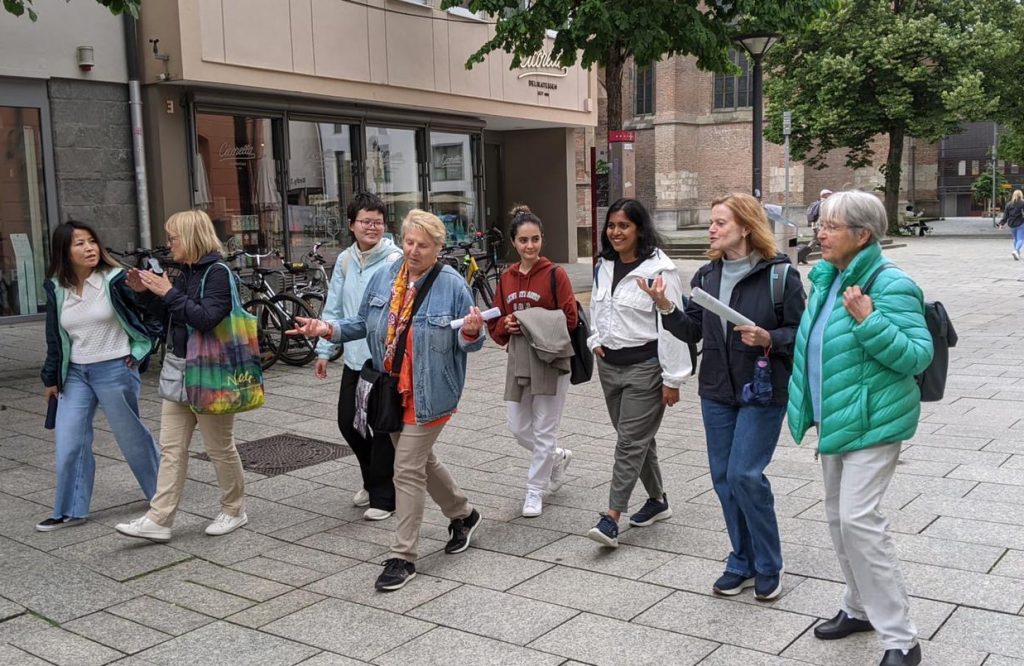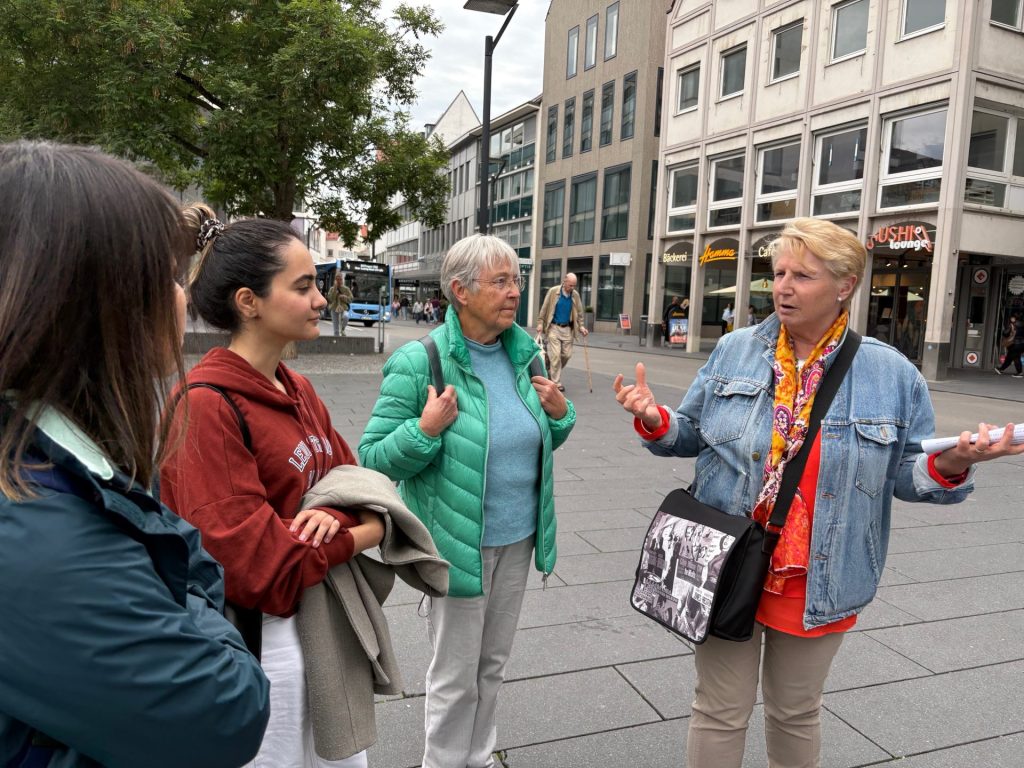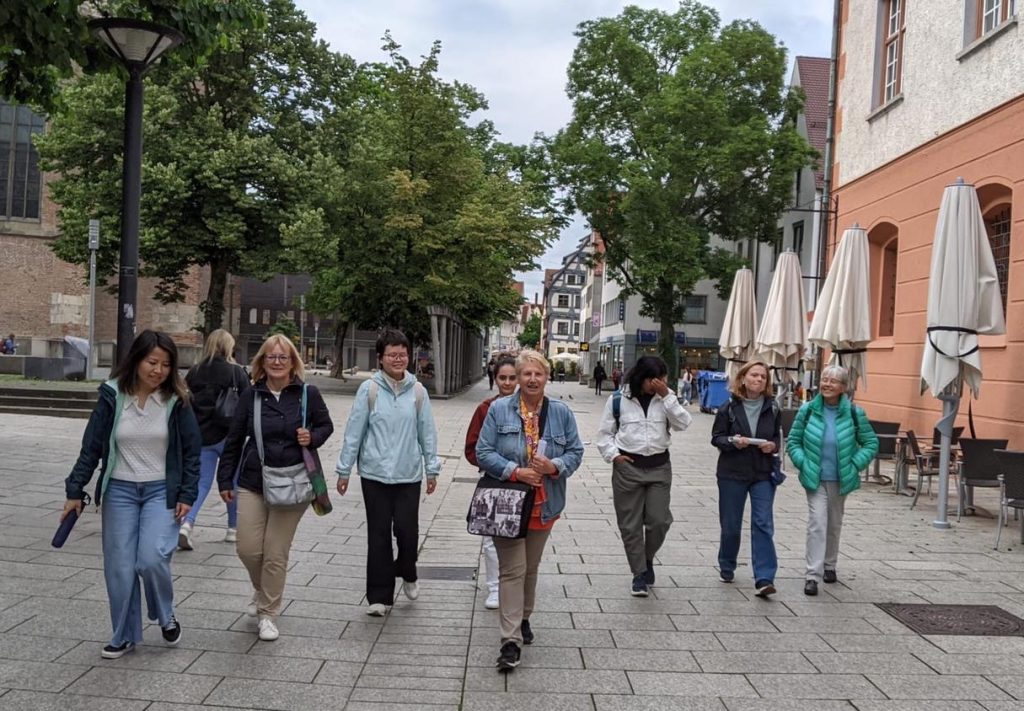1st ASSIST Women’s Walk – In the footsteps of Ulm women who have made a difference in history.
ASSIST event in Ulm on June 5, 2025

Some of Ulm’s streetcars are named after notable women, such as Agatha Streicher, Anna Essinger, and Sophie Scholl. Who were these women? What do “Sammlungsgasse” and “Metzgerturm” mean?
The goal of the first women’s event in Ulm’s city center was to recount the city’s history from a female perspective. On Thursday, June 5, the ASSIST group gathered in front of the Ulm Minster to explore history from a female perspective.
ASSIST Senior Consultant Erla kicked things off by talking about the medieval community of beguines. The community of women worked in healthcare and social services and was an important part of Ulm for 600 years. Erla had another exciting story to tell. Long before women were permitted to enroll in universities, a woman from Ulm became the first recognized doctor in Germany. Her name was Agatha Streicher and she lived in the 16th century.
At the Hans-und-Sophie-Scholl-Platz, Sabine spoke about the brave Sophie Scholl. At a young age, Sophie and her brother organized a peaceful resistance against the brutal Nazi regime. They were betrayed and murdered by the regime in 1943.
Gudrun recounted the story of Anna Essinger. Born in Ulm to a Jewish family, Anna became the director of a liberal private boarding school near Ulm. As early as 1933, Anna realized that Adolf Hitler and his Nazi regime would not tolerate her liberal approach to teaching much longer and organized as early as October 1933 an escape to England for all her students and teachers and thereby saved many lives.


